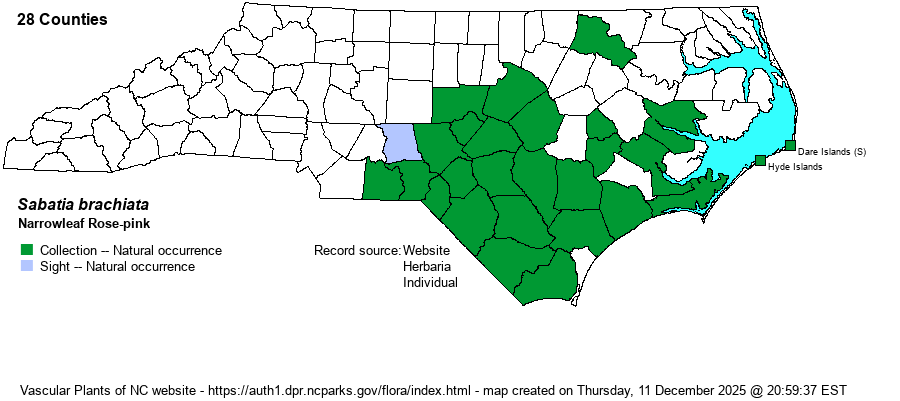| Author | Elliott | |
| Distribution | Present throughout the southern half of the Coastal Plain, including the Sandhills region. Also sparingly into the southeastern edge of the Piedmont, ranging west to Halifax, Chatham, Montgomery, and Anson counties. Scarce to absent in the northern Coastal Plain, though it does occur along parts of the Outer Banks. As it is present in a number of southeastern VA counties, it ought to be present in the northeastern corner of NC.
This is a Southern species, ranging from southeastern VA to southeastern MO, and south to southern GA and eastern TX.
| |
| Abundance | Uncommon to infrequent in the Sandhills and elsewhere east to Onslow County; rare and local north to Halifax County, and also along the eastern edge of the Piedmont. Despite it being recorded from essentially all counties in the southeastern part of the state, this species is not at all numerous, and the S3 State Rank seems appropriate. | |
| Habitat | This species is most always associated with acidic soils close to, or within, pine stands. It favors somewhat dry to mesic sites, so is found in mesic pinelands, pine flatwoods, edges of pine stands, including regenerating clearcuts, and in some pine/scrub oak sandhills. It is scarce in pine savannas, however. |
| Phenology | Blooms from late May to July, and fruits from August to September. | |
| Identification | This species at first glance looks like the common and familiar Common Rose-pink (S. angularis). However, this species grows to about 1-1.5 feet tall, has a rounded stem as opposed to a square one, and different leaves. This species has a basal rosette of leaves during flowering, they being hairy and oblanceolate, often about 2-3 inches long. The paired stem leaves are lanceolate to nearly linear, about 1-1.5 inches long and much narrower than those of S. angularis. The inflorescence is quite similar to S. angularis, with a panicle of numerous rose-pink flowers on the many branch tips; each flower is nearly 1-inch across. This species may take a while to find, even in the Sandhills and counties to the east. But, as with S. angularis, when seen in bloom it is quite a striking wildflower, easily told by its narrow leaves and a basal rosette. | |
| Taxonomic Comments | None
| |
| Other Common Name(s) | Narrowleaf Rose-gentian, Narrowleaf Pink | |
| State Rank | S3 | |
| Global Rank | G5? | |
| State Status | | |
| US Status | | |
| USACE-agcp | FAC link |
| USACE-emp | FACU link |

